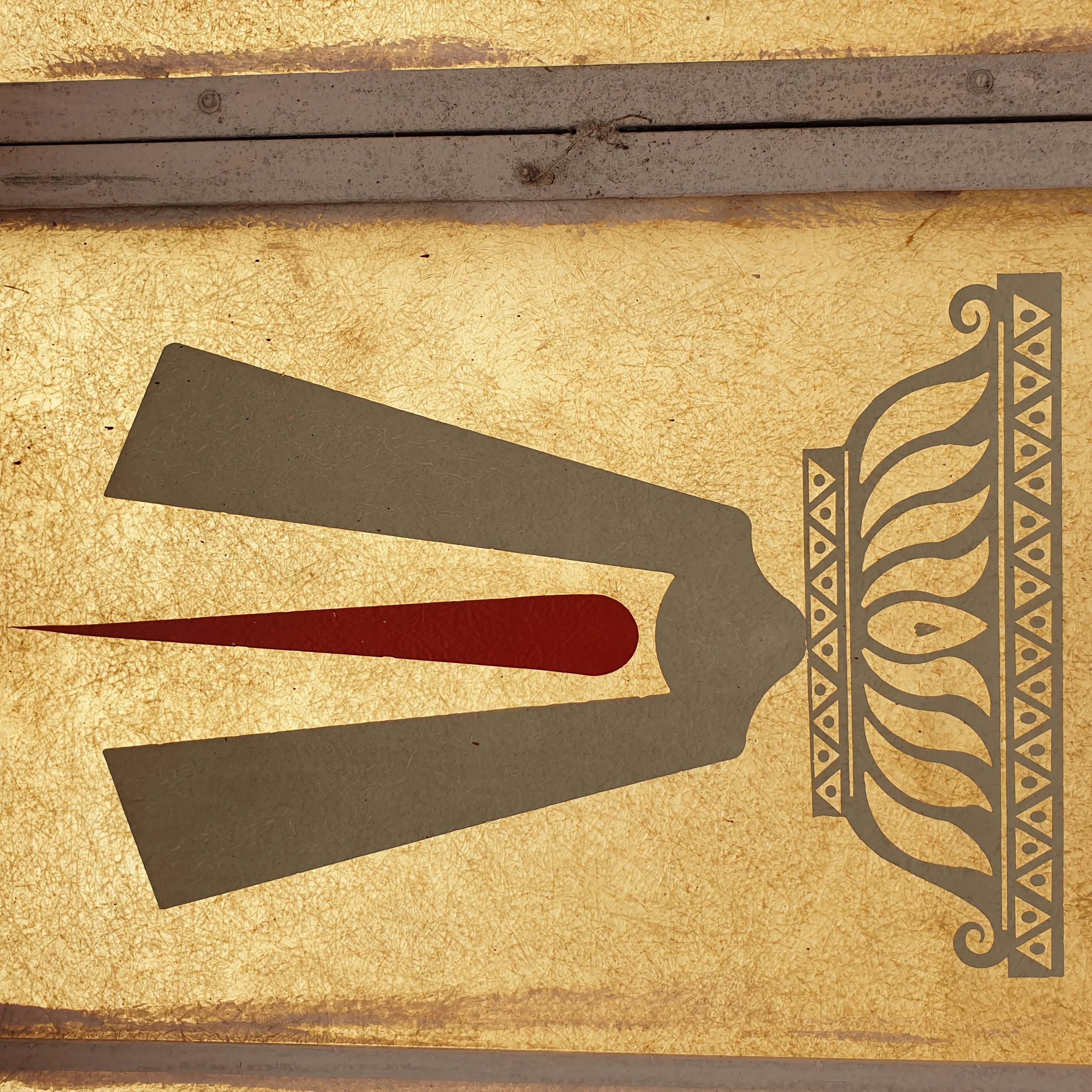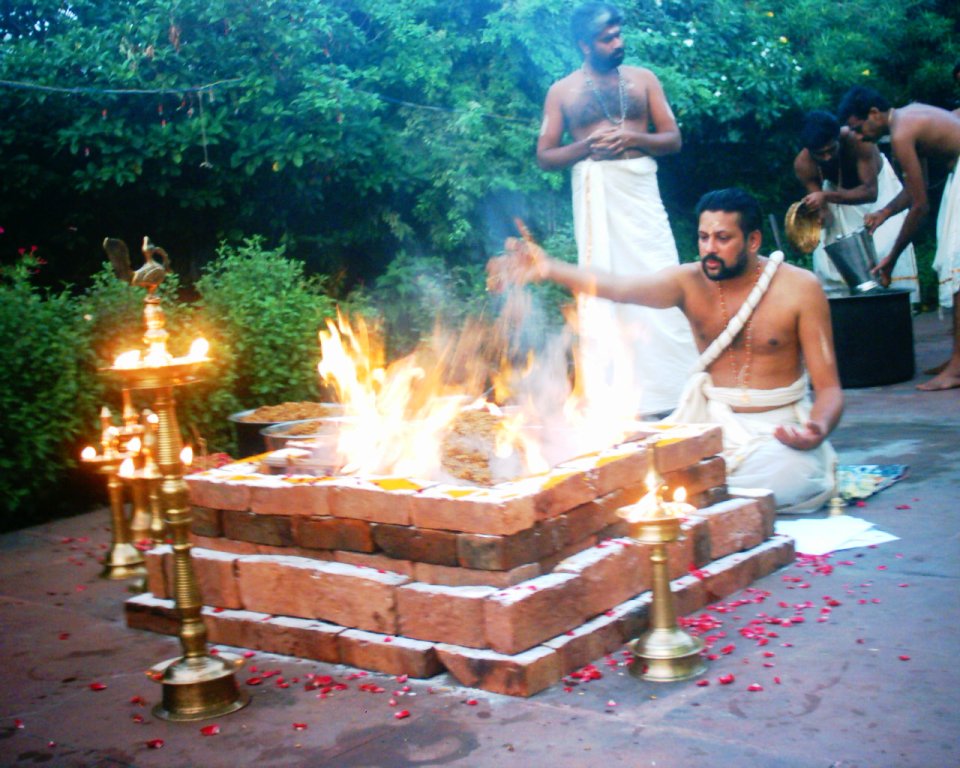|
Vaishnava Upanishads
The Vaishnava Upanishads are minor Upanishads of Hinduism, related to Vishnu theology (Vaishnavism). There are 14 Vaishnava Upanishads in the Muktika anthology of 108 Upanishads. They, along with other minor Upanishads, are generally classified separate from the thirteen major Principal Upanishads considered to be more ancient and from the Vedic tradition. The Vaishnava Upanishads propound Vishnu, Narayana, Rama, or one of his avatars as the supreme metaphysical reality called Brahman in Hinduism. They discuss a diverse range of topics, from ethics, to the methods of worship. Some of the Vaishnava Upanishads exist in more than one version, each version attached to a different Veda depending on the region their manuscript has been discovered. Furthermore, scholars disagree on which minor Upanishads are Vaishnava; for example, Deussen classifies Maha Upanishad as a Vaishnava Upanishad, but Tinoco lists it as a Samanya Upanishad. The Vaishnava Upanishads also contrast from othe ... [...More Info...] [...Related Items...] OR: [Wikipedia] [Google] [Baidu] |
Yoga Upanishads
Yoga Upanishads are a group of minor Upanishads of Hinduism related to Yoga. There are twenty Yoga Upanishads in the anthology of 108 Upanishads listed in the Muktika anthology. The Yoga Upanishads, along with other minor Upanishads, are generally classified separate from the thirteen major Principal Upanishads considered to be more ancient and from the Vedic tradition. The Yoga Upanishads deal with the theory and practice of Yogic techniques, with varied emphasis on methodology and meditation, but with some shared ideas. They contrast from other groups of minor Upanishads, such as the Samanya Upanishads which are of a generic nature, the Sannyasa Upanishads which focus on the Hindu renunciation and monastic practice, the Shaiva Upanishads which highlight aspects of Shaivism, the Vaishnava Upanishads which highlight Vaishnavism, and the Shakta Upanishads which highlight Shaktism. Date The composition date of each Yoga Upanishad is unclear, and estimates on when they were ... [...More Info...] [...Related Items...] OR: [Wikipedia] [Google] [Baidu] |
Mahanarayana Upanishad
The ''Mahanarayana Upanishad'' (, IAST: Mahānārāyaṇa Upaniṣad), also ''Brihannarayana Upanishad'', is an ancient Sanskrit text, and is one of the minor Upanishads of Hinduism. The text is classified as a Vaishnava Upanishad. The text exists in three main versions. One version with 64 chapters is attached to the Krishna Yajurveda in several South Indian anthologies, and the same text in Andhra edition exists in an expanded form with 80 chapters attached to the same Veda. A second version is attached to the Atharvaveda, has 25 chapters and is prefixed with ''Tripadvibhuti''. These manuscripts are sometimes titled as the Yajniki Upanishad or Tripad-vibhuti-mahanarayana Upanishad. According to Swami Vimalananda, this Upanishad is also called Yagniki Upanishad in reverence for sage Yagnatma Narayana. Author Doris Srinivasan says, The Upanishad, despite its title which means "Great Narayana", is notable for glorifying both Narayana and Rudra, both as the first equivalent em ... [...More Info...] [...Related Items...] OR: [Wikipedia] [Google] [Baidu] |
Nrisimha Tapaniya Upanishad
The ''Nrisimha Tapaniya Upanishad'' (नृसिंह तापनीय उपनिषद्) is a minor Upanishadic text written in Sanskrit. It is one of the 31 Upanishads attached to the Atharvaveda, and classified as one of the Vaishnava Upanishads. It is presented in two parts, the Purva Tapaniya Upanishad and the Uttara Tapaniya Upanishad, which formed the main scriptures of the Narasimha sect of the Vaishnavas dated prior to the 7th century. The text is notable for asserting at fourfold identity, that Atman (soul, self) is the same as Om, Brahman (Absolute Reality) and Vishnu Man-Lion avatar, '' Nrisimha''. The Upanishad opens with verses of the Rigveda. Its foundation of monism philosophy, as well its style is also found in other Vaishnava Upanishads such as those dedicated to Rama. The Nrisimha Mantra, with its four supplementary mantras, is enunciated with the epithet "mantraraja" (king of hymns). It has " Om" as the foremost hymn which is repeatedly emphasize ... [...More Info...] [...Related Items...] OR: [Wikipedia] [Google] [Baidu] |
Krishna Yajurveda
The ''Yajurveda'' (, , from यजुस्, "worship", and वेद, "knowledge") is the Veda primarily of prose mantras for worship rituals.Michael Witzel (2003), "Vedas and Upaniṣads", in ''The Blackwell Companion to Hinduism'' (Editor: Gavin Flood), Blackwell, , pages 76–77 An ancient Vedic Sanskrit text, it is a compilation of ritual-offering formulas that were said by a priest while an individual performed ritual actions such as those before the yajna fire. Yajurveda is one of the four Vedas, and one of the scriptures of Hinduism. The exact century of Yajurveda's composition is unknown, and estimated by Witzel to be between 1200 and 800 BCE, contemporaneous with Samaveda and Atharvaveda. The Yajurveda is broadly grouped into two – the "black" or "dark" (''Krishna'') Yajurveda and the "white" or "bright" (''Shukla'') Yajurveda. The term "black" implies "the un-arranged, unclear, motley collection" of verses in Yajurveda, in contrast to the "white" which implies t ... [...More Info...] [...Related Items...] OR: [Wikipedia] [Google] [Baidu] |
Narayana Upanishad
The ''Narayana Upanishad'' () is one of the minor Upanishads, listed as number 18 in the extended anthology of 108 Upanishads recited by Rama to Hanuman in Hindu literature. It is listed as number 33 in the early 19th-century Henry Thomas Colebrooke anthology. It is written in the Sanskrit language, attached to the Krishna (Black) Yajurveda. It is one of the 14 Vaishnava Upanishads, and it recommends the bhakti of Narayana (Vishnu). The Upanishad is, states Paul Deussen, among those that can be described as "cult of formula", where meditation shifts from objects and philosophy to that of a specific formula. The Narayana Upanishad posits, "'' Om Namo Narayanaya"'', an eight-syllabled mantra, as a means of reaching salvation, which is communion with Vishnu. The text is classified as one of the Mantra Upanishads.K. Narayanasvami Aiyar, ''Thirty Minor Upanishads'', University of Toronto Archives, , pp. viii, 128–129 The Narayana Upanishad asserts that "all gods, all rishis, ... [...More Info...] [...Related Items...] OR: [Wikipedia] [Google] [Baidu] |
Muktikā
Muktikā (Sanskrit: मुक्तिका) refers to the Sanskrit-language anthology of a canon of 108 Upaniṣhads. The date of composition of each is unknown, with the oldest probably from about 800 BCE. The Principal Upanishads were composed in the 1st millennium BCE, most Yoga Upanishads composed probably from the 100 BCE to 300 CE period, and seven of the Sannyasa Upanishads composed before the 3rd century CE. The canon is part of a dialogue between Rama and Hanuman dealing with the inquiry into in the Muktikā Upanishad (108 in the list). The other collections of Upanishads include ''Oupanekhat'', a Persian language anthology of 50 Upanishads; the Colebrooke Collection of 52 Upanishads, and the 52 Upanishad Collection of Nārāyana. The canon The canon is part of a dialogue between Rama and Hanuman. Rama proposes to teach Vedanta, saying "Even by reading one verse of them ny Upanishadwith devotion, one gets the status of union with me, which is hard to get even by s ... [...More Info...] [...Related Items...] OR: [Wikipedia] [Google] [Baidu] |
Atharvaveda
The Atharvaveda or Atharva Veda (, , from ''wikt:अथर्वन्, अथर्वन्'', "priest" and ''wikt:वेद, वेद'', "knowledge") or is the "knowledge storehouse of ''wikt:अथर्वन्, atharvans'', the procedures for everyday life".Laurie Patton (2004), "Veda and Upanishad," in ''The Hindu World'' (Editors: Sushil Mittal and Gene Thursby), Routledge, , page 38 The text is the fourth Veda, and is a late addition to the Vedic scriptures of Hinduism.Laurie Patton (1994), ''Authority, Anxiety, and Canon: Essays in Vedic Interpretation,'' State University of New York Press, , page 57 The language of the Atharvaveda is different from Rigvedic Sanskrit, preserving pre-Vedic Indo-European archaisms. It is a collection of 730 Music of India#History, hymns with about 6,000 mantras, divided into 20 books.Maurice Bloomfield''The Atharvaveda'' Harvard University Press, pages 1-2 About a sixth of the Atharvaveda texts adapt verses from the Rigveda, and exce ... [...More Info...] [...Related Items...] OR: [Wikipedia] [Google] [Baidu] |
Patrick Olivelle
Patrick Olivelle is an Indologist. A philologist and scholar of Sanskrit Literature whose work has focused on asceticism, renunciation and the dharma, Olivelle has been Professor of Sanskrit and Indian Religions in the Department of Asian Studies at the University of Texas at Austin since 1991. Early life Olivelle was born in Sri Lanka. He received a B.A. (Honours) in 1972 from the University of Oxford, where he studied Sanskrit, Pali and Indian religions with Thomas Burrow and R.C. Zaehner. He received his Ph.D. from the University of Pennsylvania in 1974 for a thesis containing the critical edition and translation of Yadava Prakasa's ''Yatidharmaprakasa'' under the supervision of Ludo Rocher. Between 1974 and 1991, Olivelle taught in the Department of Religious Studies at Indiana University Bloomington Indiana University Bloomington (IU Bloomington, Indiana University, IU, IUB, or Indiana) is a public university, public research university in Bloomington, Indiana, ... [...More Info...] [...Related Items...] OR: [Wikipedia] [Google] [Baidu] |
University Of Hawaii
A university () is an educational institution, institution of tertiary education and research which awards academic degrees in several Discipline (academia), academic disciplines. ''University'' is derived from the Latin phrase , which roughly means "community of teachers and scholars". Universities typically offer both undergraduate education, undergraduate and postgraduate education, postgraduate programs. The first universities in Europe were established by Catholic Church, Catholic monks. The University of Bologna (), Italy, which was founded in 1088, is the first university in the sense of: *being a high degree-awarding institute. *using the word (which was coined at its foundation). *having independence from the ecclesiastic schools and issuing secular as well as non-secular degrees (with teaching conducted by both clergy and non-clergy): grammar, rhetoric, logic, theology, canon law and notarial law.Hunt Janin: "The university in medieval life, 1179–1499", McFarland, 2 ... [...More Info...] [...Related Items...] OR: [Wikipedia] [Google] [Baidu] |
Shaktism
Shaktism () is a major Hindu denomination in which the God in Hinduism, deity or metaphysics, metaphysical reality is considered metaphorically to be a woman. Shaktism involves a galaxy of goddesses, all regarded as different aspects, manifestations, or personifications of the divine feminine energy called ''Shakti''. It includes various modes of worship, ranging from those focused on the most worshipped Durga, to gracious Parvati, and the fierce Kali. After the decline of Buddhism in India, various Hindu and Buddhist goddesses were combined to form the Mahavidya, a Pantheon (religion), pantheon of ten goddesses. The most common forms of the Mahadevi worshipped in Shaktism include: Durga, Kali, Saraswati, Lakshmi, Parvati, and Tripura Sundari. Also worshipped are the various Gramadevatas across the Indian villages. Shaktism also encompasses various Tantra#Śaiva and Śākta tantra, tantric sub-traditions, including Vidyapitha and Kulamārga. Shaktism emphasizes that intense ... [...More Info...] [...Related Items...] OR: [Wikipedia] [Google] [Baidu] |
Shakta Upanishads
Shakta Upanishads are a group of minor Upanishads of Hinduism related to the Shaktism theology of a Goddess (Devi) as the Supreme Being. There are 8 Shakta Upanishads in the Muktika anthology of 108 Upanishads. They, along with other minor Upanishads, are generally classified separate from the thirteen major Principal Upanishads considered to be from the ancient Vedic tradition. The Shakta Upanishads also contrast from other groups of minor Upanishads, such as the Samanya Upanishads which are of a generic nature, the Sannyasa Upanishads which focus on the Hindu renunciation and monastic practice, the Yoga Upanishads related to Yoga, the Shaiva Upanishads which highlight aspects of Shaivism, and the Vaishnava Upanishads which highlight Vaishnavism. Composed in medieval India, the Shakta Upanishads are among the most recent minor Upanishads, and constitute an important source of information on Devi worship and Tantra-related theology. Some Shakta Upanishads exist in more tha ... [...More Info...] [...Related Items...] OR: [Wikipedia] [Google] [Baidu] |




